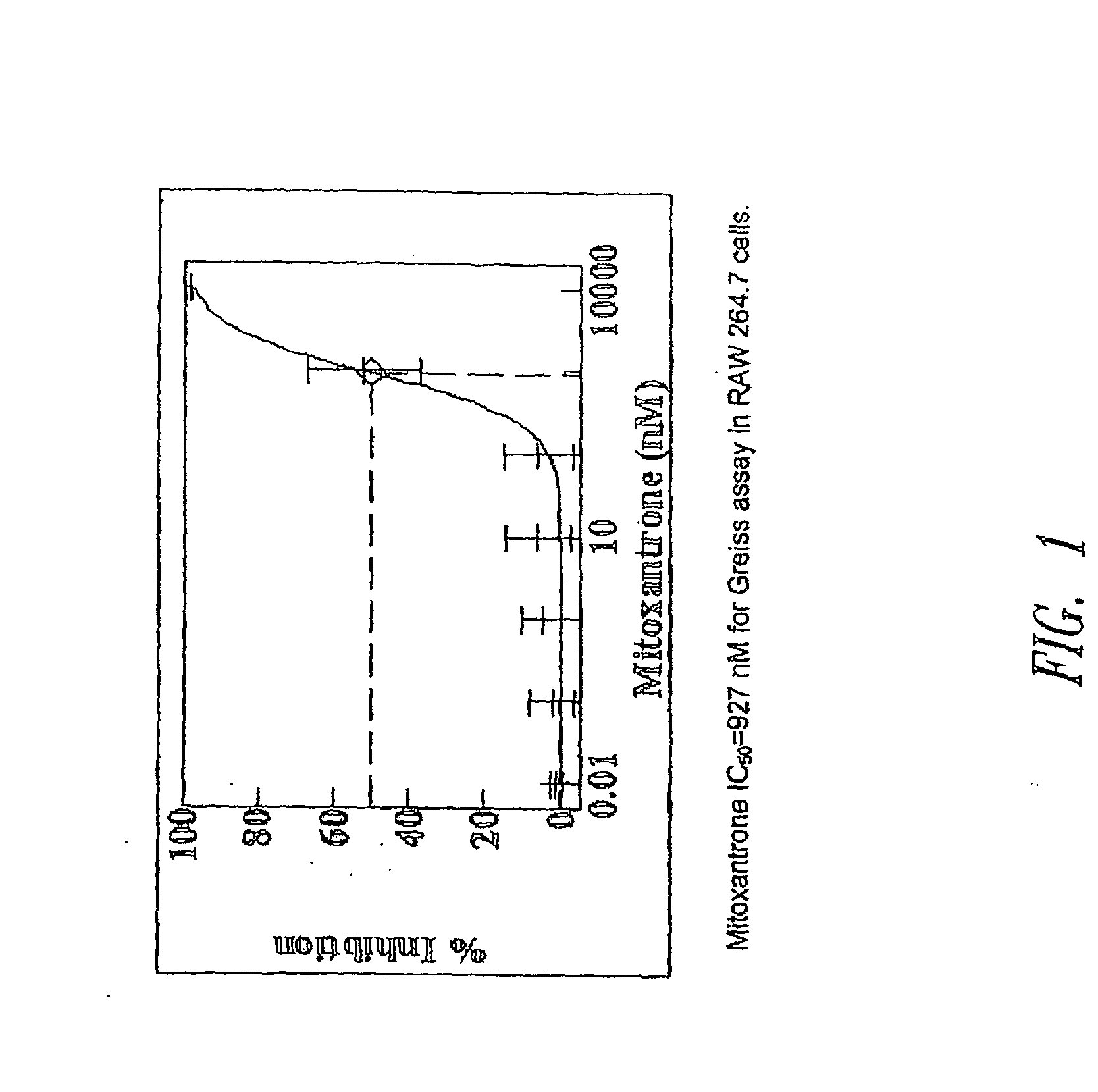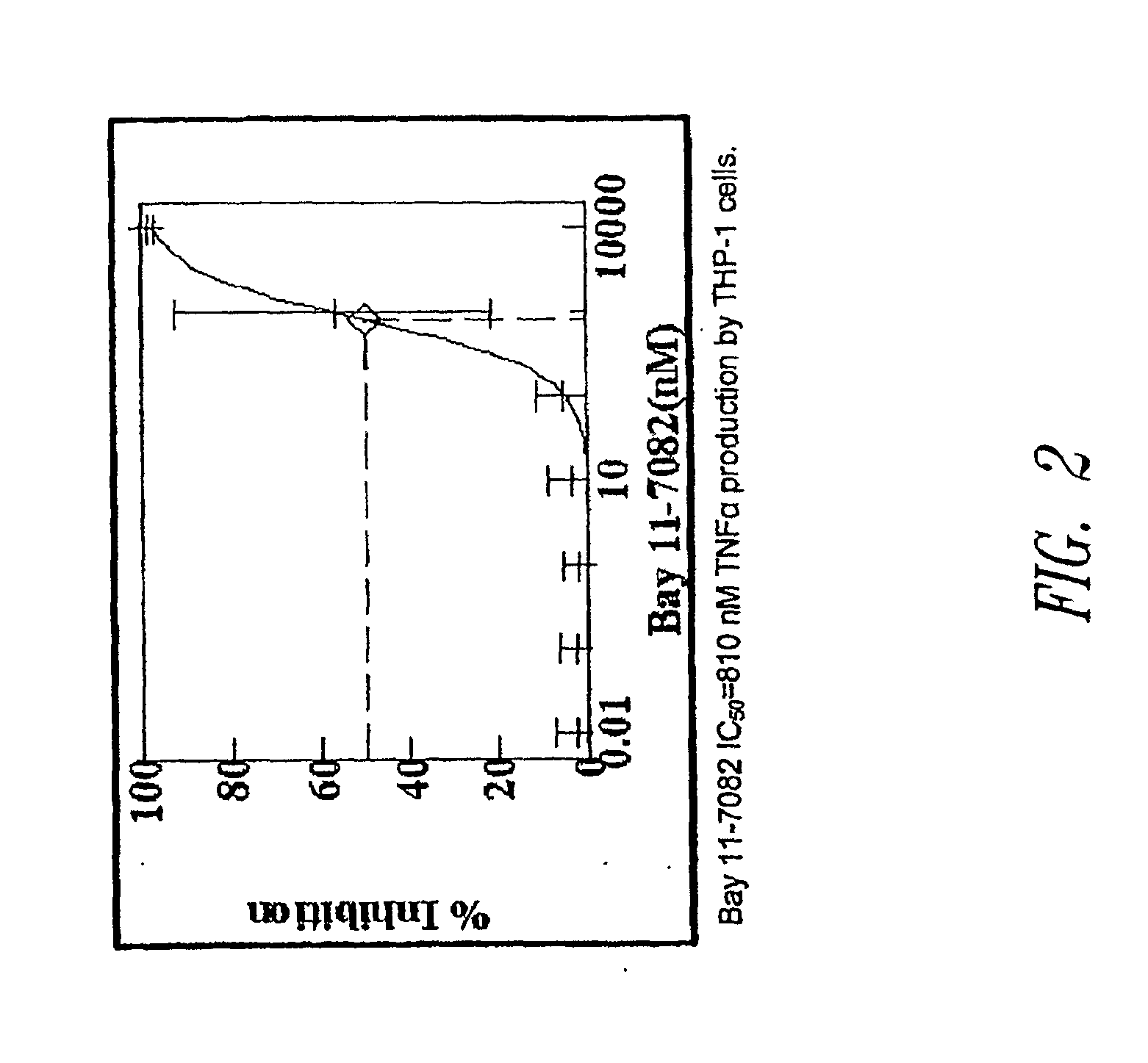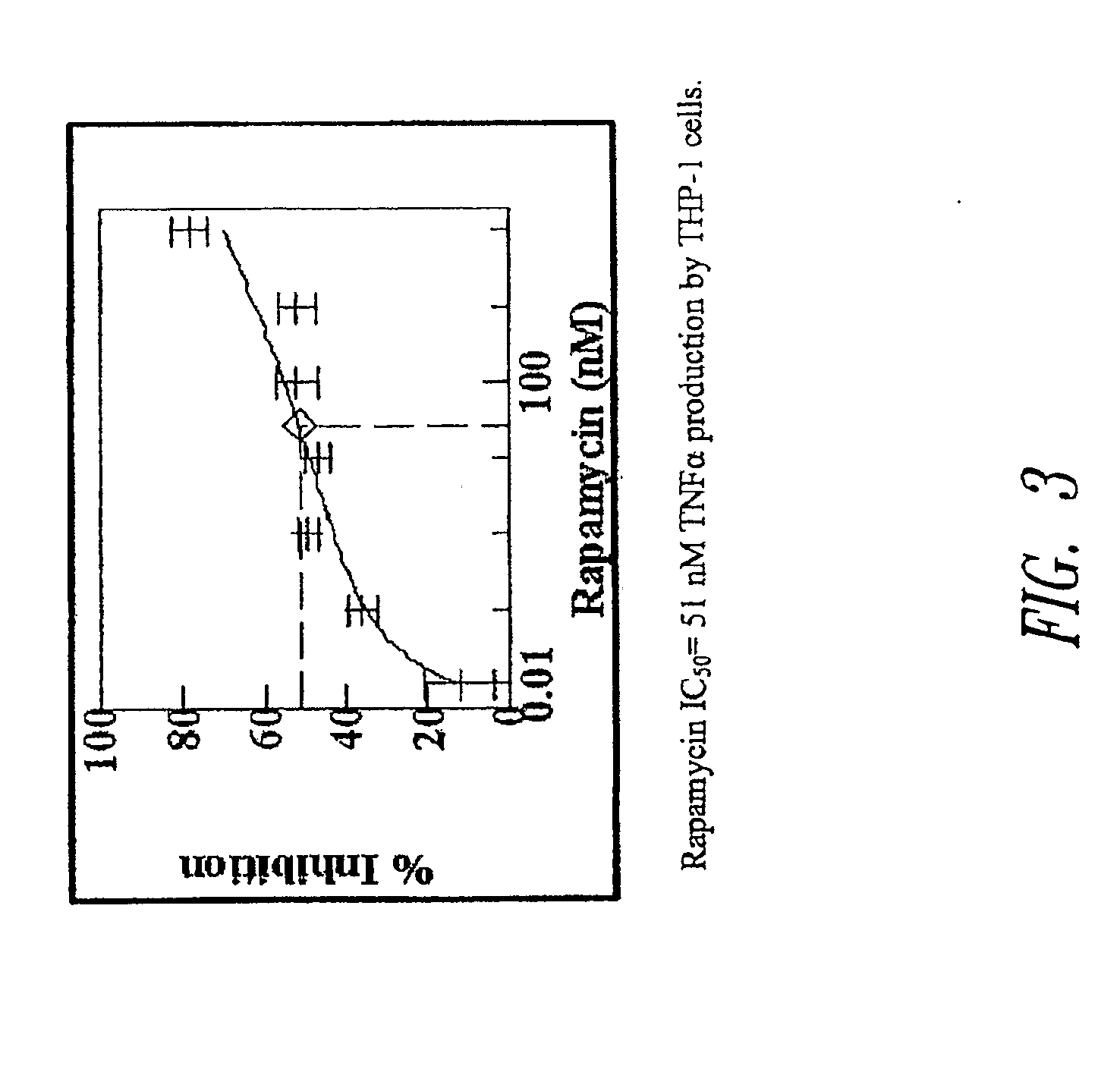Sutures and Anti-scarring agents
a technology applied in the field of sutures and anti-scarring agents, can solve the problems of surgical breakdown of adhesions, failure and recurrence, formation of clinically significant adhesions, etc., and achieve the effect of reducing excessive scarring or surgical adhesion
- Summary
- Abstract
- Description
- Claims
- Application Information
AI Technical Summary
Benefits of technology
Problems solved by technology
Method used
Image
Examples
example 1
Dip Coating a Suture
[0936]Poly(lactide-co-glycolide) [30 / 70] (PLG) is dissolved in 10 ml dichloromethane to produce a solution that has a polymer concentration of approximately 40 mg / mL. Paclitaxel is added to the PLG solution to produce a final paclitaxel concentration of 3 mg / mL. A monofilament polydioxanone suture (size 3-0) is cleaned by immersing the filter in isopropanol for 30 minutes and then rinsing 3 times with isopropanol. The suture is air-dried. The suture is dip coated by completely immersing the cleaned suture into the PLG-paclitaxel solution. The suture is then removed from the solution and is air-dried. This process may be repeated until the desired paclitaxel dose is achieved. The suture is then dried under vacuum. Other fibrosis-inhibiting agents that may be coated onto a suture using this procedure include halofuginone, rapamycin, everolimus, and pimecerolimus.
example 2
Spray Coating a Suture
[0937]A 2% solution of poly(glycolide-co-caprolactone) [10 / 90] {PGC} is prepared using dichmoromethane as the solvent. Paclitaxel is added to the PGC solution to produce a final paclitaxel concentration of 3 mg / mL. The PGC-paclitaxel solution is then transferred to the reservoir of an artist's airbrush tool. A monofilament polydioxanone suture (size 3-0) is cleaned by immersing the suture into isopropanol for 30 minutes and then rinsing 3 times with isopropanol. The suture is air-dried. Using a crocodile clip, the suture is suspended in the air and is spray coated from several angles to ensure complete coating of the suture. Once the coating is dry to the touch, the suture is removed from the clip and the uncoated portion is spray coated. The suture is then air dried and / or vacuum dried to remove the solvent. This process may be repeated until the desired paclitaxel dose is achieved. The suture is then dried under vacuum. Other fibrosis-inhibiting agents that m...
example 3
Application of a Second Coating to a Suture
[0938]Poly(lactide-co-glycolide) [30 / 70] (PLG) is dissolved in 10 ml dichloromethane to produce a solution that has a polymer concentration of approximately 40 mg / mL. Halofuginone is added to the PLG solution to produce a final halofuginone concentration of 3 mg / mL. A monofilament polydioxanone suture (size 3-0) is cleaned by immersing the suture into isopropanol for 30 minutes and then rinsing 3 times with isopropanol. The filter is air-dried. The suture is dip coated by completely immersing the cleaned filter into the PLG-halofuginone solution. The suture is then removed from the solution and is air dried. This process may be repeated until the desired halofuginone dose is achieved. The suture is then dried under vacuum to remove the residual solvent. The suture is then dipped into an aqueous solution of sodium hyaluronate [HA] (mw approximately 1-1.5×106 kDa, 10 mg / mL). The water is removed by air-drying at 37° C. The process is repeated...
PUM
| Property | Measurement | Unit |
|---|---|---|
| Adhesion strength | aaaaa | aaaaa |
Abstract
Description
Claims
Application Information
 Login to View More
Login to View More - R&D
- Intellectual Property
- Life Sciences
- Materials
- Tech Scout
- Unparalleled Data Quality
- Higher Quality Content
- 60% Fewer Hallucinations
Browse by: Latest US Patents, China's latest patents, Technical Efficacy Thesaurus, Application Domain, Technology Topic, Popular Technical Reports.
© 2025 PatSnap. All rights reserved.Legal|Privacy policy|Modern Slavery Act Transparency Statement|Sitemap|About US| Contact US: help@patsnap.com



